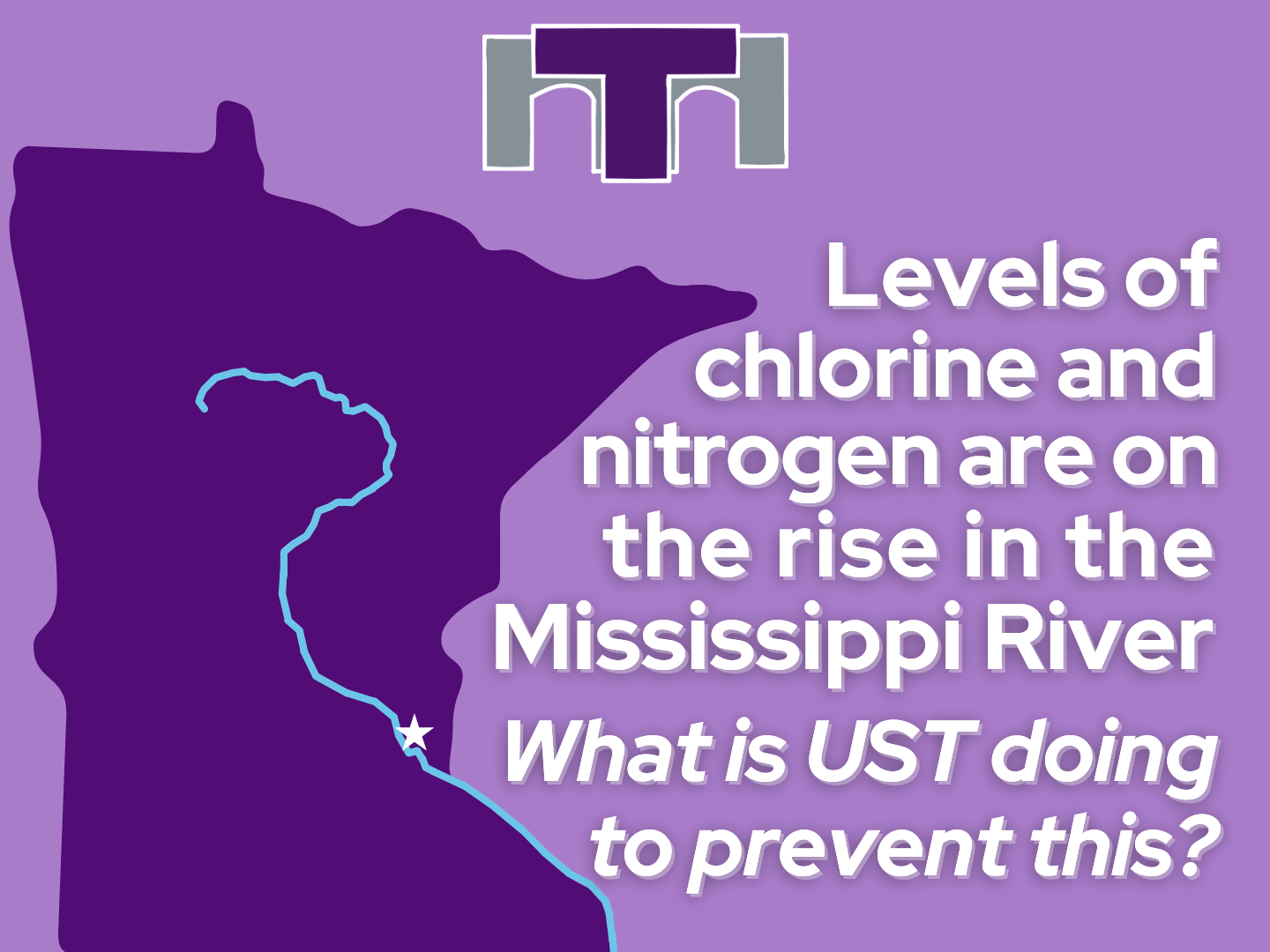
While pollutants like sediment, phosphorus, and bacteria have been decreasing in the Mississippi River, nitrogen and chloride have risen over the past forty years, according to the Minnesota Pollution Control Agency.
The MPCA’s study monitored levels in the Mississippi River from 1976 until 2015. According to the Metropolitan Council, the increase in nitrogen is caused by the increased use of fertilizer and the increase in chloride is because of the use of road salt.
Paul Hietpas, St. Thomas facilities supervisor and advisor to the sustainability club, said the university treats sidewalks with road salt for public safety. The sidewalk treatment contains sodium chloride and calcium chloride.
“The sodium chloride, calcium chloride mixture is a lot safer than it used to be,” Heitpas said.
Hietpas encourages his staff that “less is more” when treating sidewalks with road salt. This practice is also recommended by the MPCA to reduce the impact of salts used.
St. Thomas facilities also pretreats sidewalks before the snow and ice arrive with a mixture of beet extract with small amounts of sodium and calcium chloride.
Hietpas said the mixture is “a more natural product that chemists have found prevents ice from forming.”
“We do walk around with pretreat machines before every storm and treat steps and sidewalks,” Hietpas said.
Hietpas said that sidewalk treatments are “a double-edged sword” because some of the alternative treatments tend to get tracked inside buildings and create slippery surfaces indoors.
While the rise in nitrogen concentrations in the river has slowed since the 1980s, a big contributor to the still-noticeable levels is fertilizer.
St. Thomas’ Operation and Maintenance Plan outlines the use of fertilizer on campus grounds. The guidelines acknowledge the risk of fertilizer runoff but work to reduce the amount of fertilizer applied in areas where the risk for runoff is higher.
Maria Dahmus, director of the Office of Sustainability Initiatives and Sustainable Community Partnerships, hopes to partner the Adopt a Storm Drain Program and various clubs on campus. The program works to keep storm drains clear of leaves and other pollutants that could drain into the river.
“Whatever enters those (storm drains) goes right into the river,” Dahmus said, “when leaves accumulate on top of the storm drains all the nutrients they have enters the water which puts excess nutrients into the water.”
Excess nutrients cause complications because they increase algae growth. A surplus of algae cuts off oxygen needed for the aquatic organisms in the river, according to Dahmus.
Hietpas and Sustainability Club clean out the storm drains twice a year during their Mississippi River clean ups. The river clean up tradition started in 1993. During a recent clean up, students collected 297 pounds of waste, according to the St. Thomas Newsroom.
Dahmus said that it is important to protect the river from pollution because of the overall role it plays in our lives.
“The Mississippi river is a part of our ecosystem and its health affects the health and the functioning of the rest of the ecosystem and our own health so they are all interconnected and embedded together,” Dahmus said.
Sydney Dorsey can be reached at dors3655@stthomas.edu.


